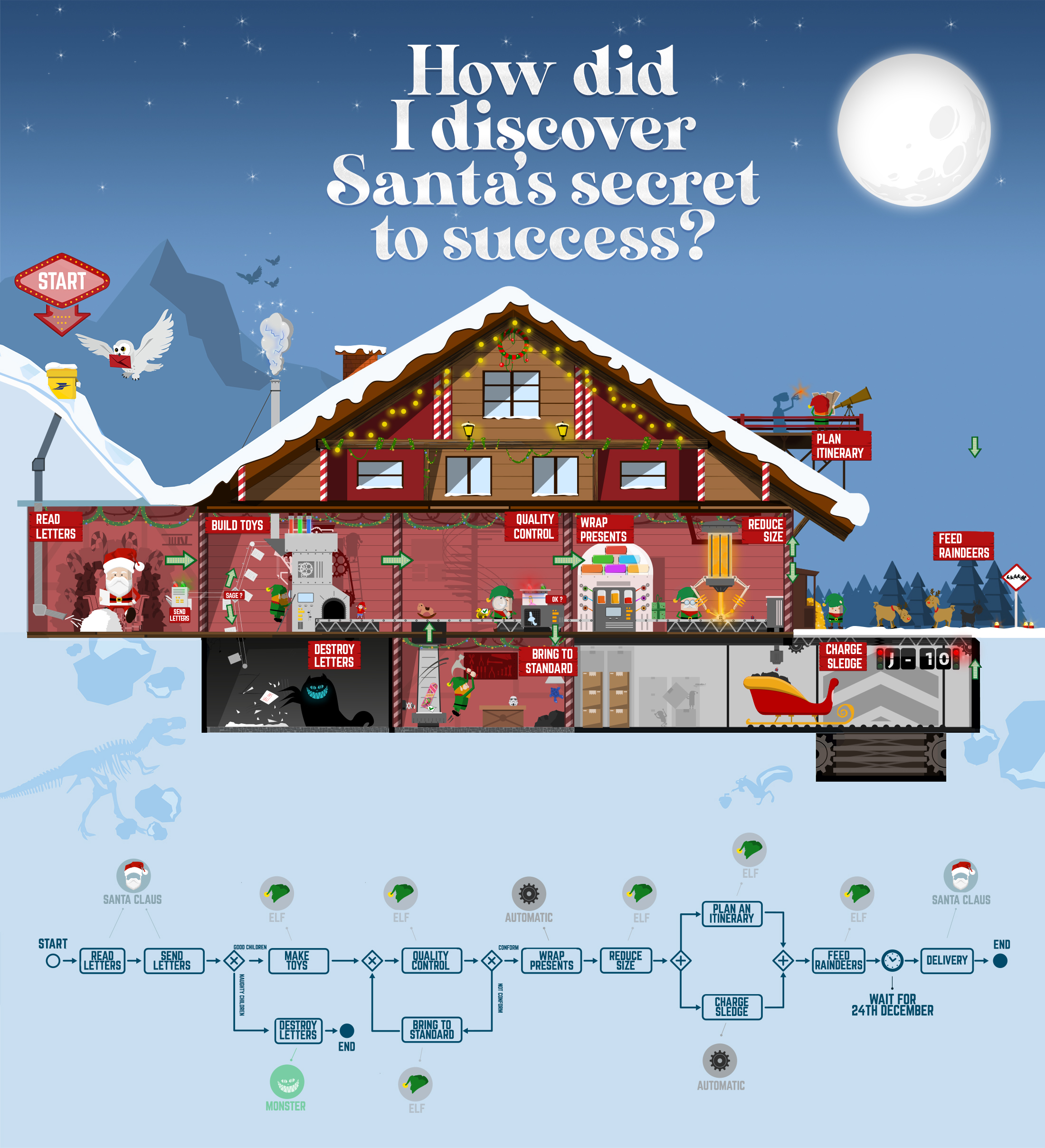
“When I was a child, I often wondered how Santa Claus, an old man with a bit of a build, could single-handedly read all the children’s letters, make the toys and deliver all those gifts in such a short time without ever forgetting even one child.
As the years went by, these questions became omnipresent and I finally decided that I absolutely had to discover Santa’s secret to success.
Determined and motivated, I set out on a long journey in search of any clue that would reveal Santa’s hiding place. After several months, I found myself in a refuge in the depths of Lapland.
Cold and sweaty, I was ready to give up and go back home when suddenly I saw a shadow passing by the window at full speed.
Instinctively, I decided to follow it despite the cold. Without really distinguishing what it could be, this silhouette led me to a big chalet hidden by a thick snowy coat.
I slowly approached the window and discovered dozens of elves waving here and there. Suddenly, sitting at the back of the workshop, I saw Santa Claus. I quickly realized that this was his workshop. Overjoyed, I rushed inside without the elves even noticing my presence.
Santa Claus, surprised, saw me shivering with cold and invited me to join him by the fire. We began to talk and I had only one thought in mind, to discover the secret of his performance.
As we talked, he explained that beyond his efficient teams and his technological and magical machines, his secret lay in his organization. The satisfaction of the children being for him, the heart of his concerns, his will was to master all the stages to gain in efficiency and to respect the delivery deadlines. He specified that this step by step method allowed him to have a global vision of all his gift requests. Moreover, for his elves, the work and the exchanges were better defined and easier.
I then understood that the secret was there: to describe his operation task by task by retranscribing it in the form of a process in order to define precisely, and for each task, the “what”, “when”, “who” and “how”.
Once back home, I started to work on my own theory.
In 1967, I formalized my discovery and revealed to the world how to build its business optimization strategy around business process modeling.”
S. Williams, precursor of business process modeling.
This approach will later give birth to the BPM (Business Process Management) approach.
Today, this process approach is combined with technological solutions that allow modeling, automating and monitoring business processes with ease.